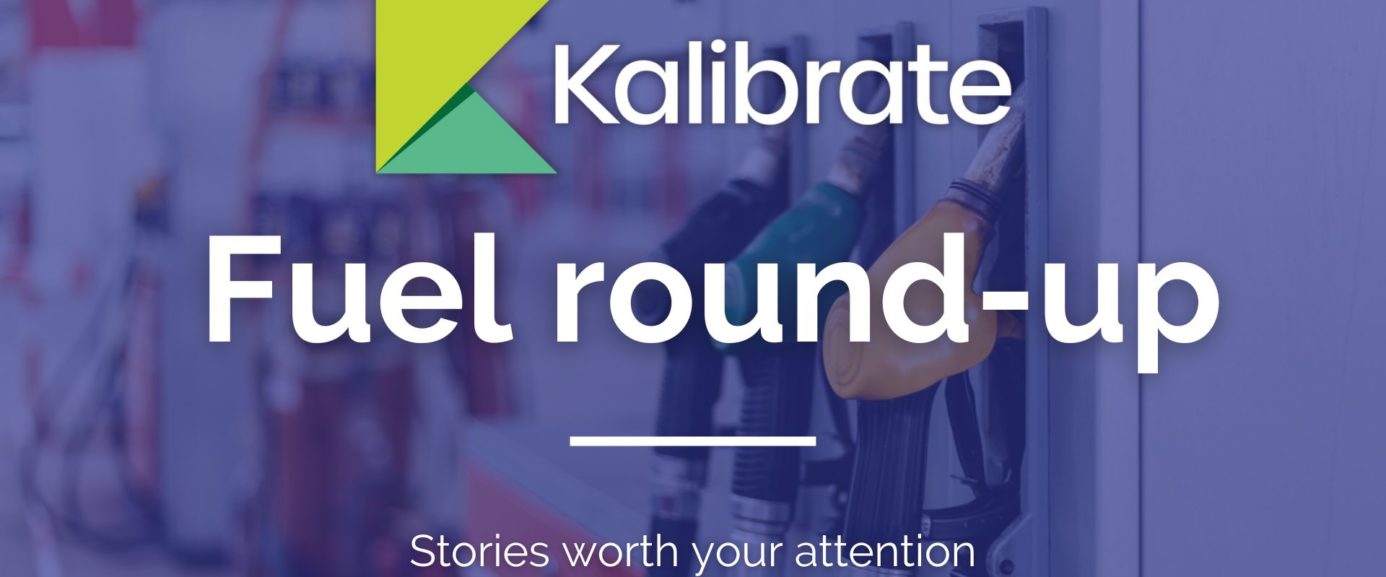The Kalibrate fuel round up: October 2022
Kalibrate works with a diverse range of fuel organizations, so we always have our ear to the ground to see how the environment is evolving. This helps us understand the challenges and opportunities facing the brands we support, but it also helps us keep across the news, innovations, transformations, trials, and tribulations, within the fuel space.
Gas prices set to drop in the US and Canada – diesel still high
Gas prices in the US and Canada have been at record highs in recent months, but with refineries coming back online, prices are expected to drop over October and into November as supply picks back up. The drop in price is being driven primarily by the refineries in California and Washington state ramping production. Coupling the refineries coming online is the typical seasonal demand falling during this period.
Kalibrate’s Paul Pasco commented on the recent trends in the industry, and what we can expect in the future. “Refinery outages that we’ve been talking about for the last two months that have kept prices higher on the west coast have finally started to come back on and now we’re seeing the price benefit.
“The demand on the diesel market right now is so high that diesel just isn’t seeing the same relief that gas is and there’s no end to it in the immediate future.”
Is HVO the future for diesel engines?
Esso is trialling 25% renewable diesel on 20 sites in the South East England. HVO – pure hydrotreated vegetable oil, which is often made from waste oils, and can be used in all diesel engines – is something that is slowly but surely gaining ground as retailers try to limit their environmental impact. The plan is to provide lower-emissions fuel milestones by 2025 and 2030 to reduce more than 25 million metric tons of C02 emissions from the transportation sector.
Using renewable sources to reduce the quantity of fossil fuels needed (and reduce carbon emissions in the process) is nothing new – in the UK, “standard-issue” petrol contains up to 10% ethanol (so-called E10 fuel), and mixes containing up to 85% ethanol (so-called E85) are available at select sites across France for example.
Lower pump prices – since less actual petrol is used – are also a welcome side-effect for consumers. What is interesting about HVO diesel is that it can be used by virtually any diesel vehicle without modifications, whereas, for example, the average car cannot use E85 without an adapter of sorts.
Several European countries already make HVO available at petrol stations, and in some cases excise duty reductions have also been put in place to drive adoption.
Expect more of this as countries and private organisations push for net-zero.
Read more in the Forecourt Trader
In the UK – Duty cut news and a potential new fuel price scheme
The UK Government appears to have accepted that fuel retailers did not profit from failing to pass on the 5p duty cut in March. After a study from the Competition and Markets Authority (CMA), published in July, found there was “no evidence… that retailers in aggregate have profited from failing to pass on the fuel duty cut.”
Kalibrate’s Matteo Locane, reflecting on the news said, “Fuel retailers are often accused of profiteering whenever pump prices go up suddenly and visibly. In this case though, the data does not support this theory.
“Due to the way product costs are calculated by different retailers – and fluctuations in volumes sold – a drop in oil prices can take a few days to be reflected at pump level; reductions in excise duties, on the other hand, are clear and straightforward, and are typically passed on to consumers right away.
“Retailers with a strong data environment and high levels of pricing automation will be able to deal with this type of situation more quickly and effectively, and they will also be better at spotting opportunities to drive volumes/margins.”
Read more about this story in the Forecourt Trader
The UK Competition and Markets Authority recommends putting in place a fuel price reporting scheme and potentially price comparison signs on motorways, something that already exists in Italy and Germany for example. The UK government appeared to give a positive response to the suggestion. Such a pro-consumer “open data scheme” would help create more transparency around fuel prices.
Fuel price reporting schemes increase transparency for consumers, but they also facilitate “bargain-hunting” behaviour – shopping around for the best price is a much more appealing prospect when live, reliable information is at your fingertips.
Of course, this live, reliable price data is also available to all fuel retailers in the market.
On one hand, this makes the pricing process stronger and more repeatable since retailers are no longer relying on competitor surveys and can identify market movements as they happen. On the other hand, the fact that all retailers can spot market movements as they happen can lead to a material increase in price volatility.
You can hear more on this topic in Fuel for Thought, Kalibrate’s new fuel industry podcast
Extending discounts – French strikes lead to stocking woes
In France, refinery workers have been on strike for the best part of the month and last Friday over 25% of French stations were out of stock for at least one product. With prices going up as a consequence of significantly reduced supply, both the French government and Total have decided to extend their pump price discounts (30c and 20c per litre respectively) until mid-November instead of reducing them on November 1st as originally planned.
French supply is slowly but steadily improving as only one refinery and one depot are still on strike – “only” 17% of French stations were out of at least one product as of October 21 (vs around 30% at the peak), a percentage that drops below 10% on motorways. The general expectation is that stock levels will return to normal at some point next week.
Kalibrate’s Tom Hatton reacted to the news, “This is great timing, as motorway traffic in particular is due to pick up in the coming weeks. The fact that pump price discounts have been extended will draw attention away from fuel prices for the time being, but the situation remains complex, and retailers would do well to continue to push for operational excellence in other fields, including pricing.”
Read more articles about:
Fuel pricingSubscribe and get the latest updates
You may unsubscribe from our mailing list at any time. To understand how and why we process your data, please see our Privacy & Cookies Policy
Related Resources
Location intelligence
Spirit Halloween gets into the Christmas spirit
Halloween pop up Spirit Halloween is trialing extending its short term leases into the festive season for a concept...

Location intelligence
Demystifying an omnichannel retail strategy
Outdated approaches view brick-and-mortar stores as the competition to the e-commerce offer. In reality, the channels...


